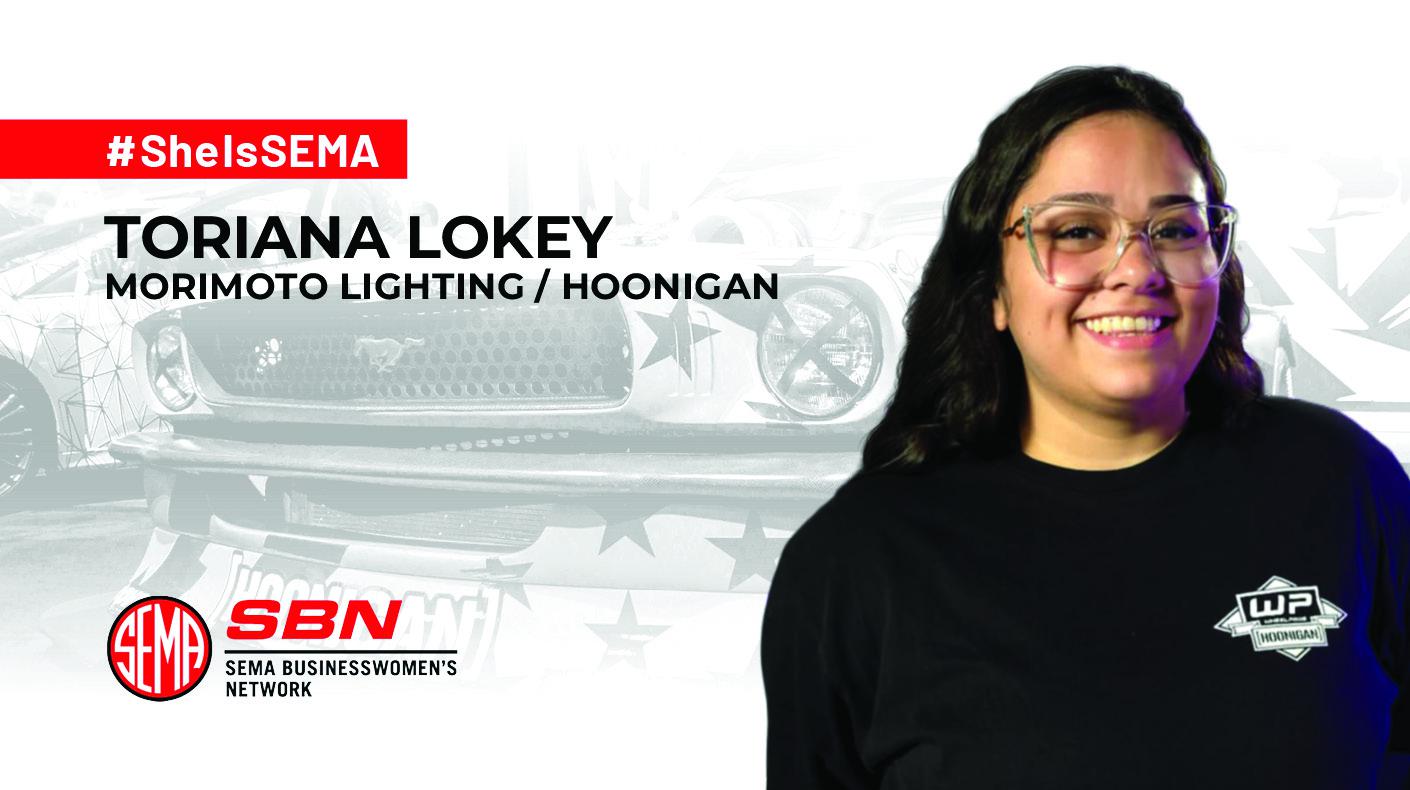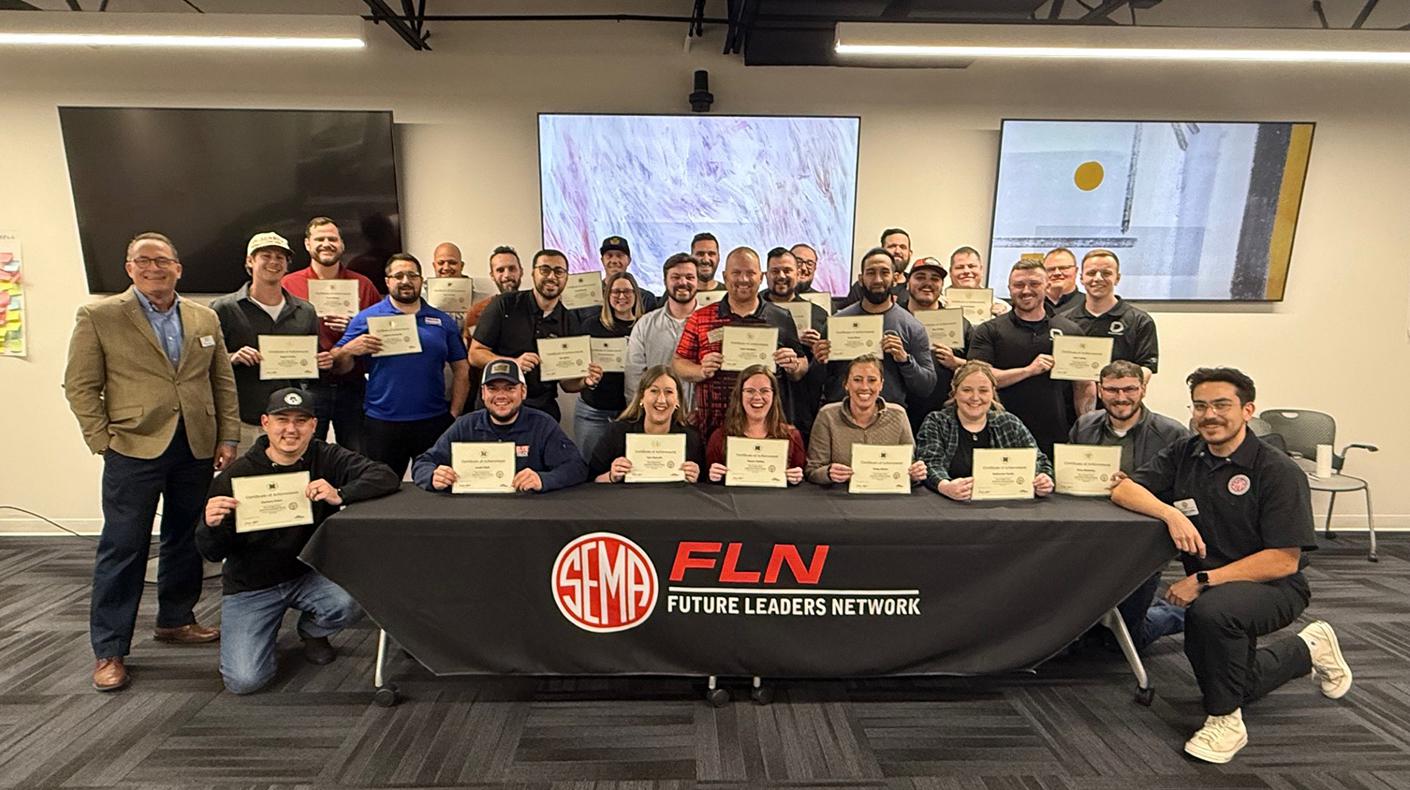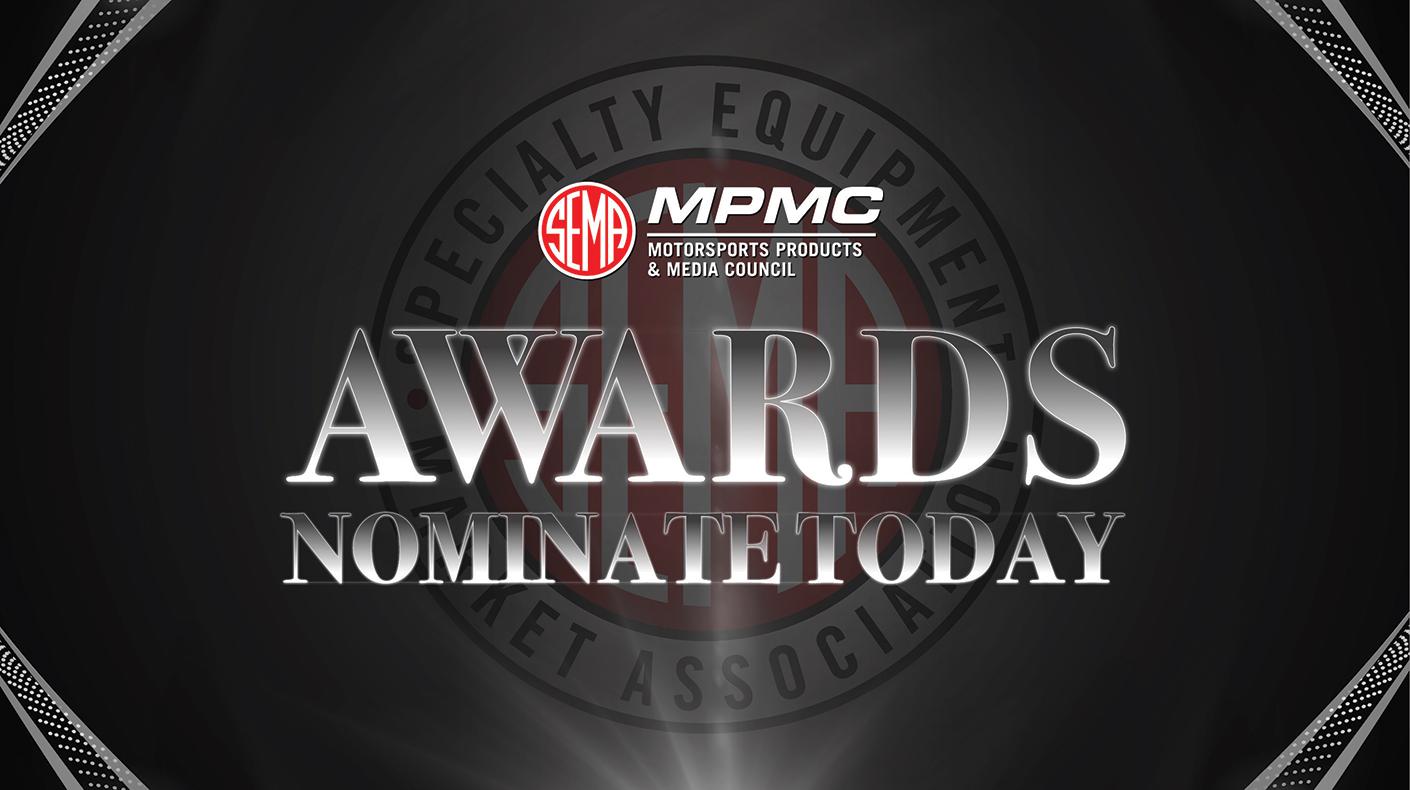By Mike Imlay
The automotive industry—and consequently the aftermarket—has entered a period of unprecedented change. Emerging technologies, new ways of doing business, and market, social and governmental forces are creating a barrage of opportunities and challenges for our industry. As a trade organization, SEMA is committed to helping members navigate industry trends so they can future-proof their businesses, succeed and prosper.

What trends, challenges and opportunities lie ahead for the aftermarket in 2023 and beyond? SEMA News turned to council and network leaders representing our major industry sectors for answers.
SEMA councils and networks play a vital role in this mission. They offer members a variety of niche-specific programs and activities designed to provide educational and networking opportunities while promoting their particular market segment. They also serve as “think tanks” to help identify segment needs and priorities.
For this two-part series, SEMA News queried the leaders of each SEMA council and network for a SWOT analysis of their industry segments. What follows are insights into the restoration, restyling, and wheel and tire segments, as well as trends relating to career development and opportunities for women. In our January 2023 issue, we will hear from the other segments served by association councils and networks. The statements below are edited for clarity and conciseness.
Automotive Restoration Market Trends
 Reported by Joanna Agosta-Shere, Chair Elect, SEMA Automotive Restoration Market Organization (ARMO):
Reported by Joanna Agosta-Shere, Chair Elect, SEMA Automotive Restoration Market Organization (ARMO):
Continued growth of the restomod market is a positive trend in our industry, as more people want the traditional look of a vehicle with modern conveniences. This isn’t necessarily a new trend but continues to be popular. I think there is a growing interest in ’80s and ’90s Asian vehicles as well. This is what my generation drove in high school, and that nostalgia is driving the trend.
There are, however, two challenges that I see currently facing our industry segment. The main one, supply-chain disruption, is very universal and still impacting all of our businesses. For the most part, as a manufacturer, we’ve been very fortunate to have suppliers that can regularly provide our raw material but with longer lead times and regularly increased prices. Some of the more niche components in those parts have been more challenging to source, however, and those are needed for the final product.
Secondly, I’ve heard over and over from our members that finding people who have the skills to restore vehicles has exceedingly become difficult. There are not enough people who are trained to do transmission or wiring work for classics. As if the current employment market isn’t challenging enough, the lack of available people with these skill sets makes it tougher for restoration shops and customers to find help.
Looking at long-term opportunities, there’s no denying that electric vehicles (EVs) are in our future. As a segment, we have to figure out how we fit in with this emerging technology. The great thing about the restoration market is that because we’re in a segment that deals with vehicles from the past, we have a long-range crystal ball to prepare for the future.
Vehicles with battery-electric motors will still need tires and wheels. They will still need classic-looking instrument panels. And they will still need interiors. In fact, making these vehicles more environmentally friendly or easier to drive and maintain may create a customer base who didn’t grow up in their dad’s garage tooling around but do appreciate having a fun vehicle to drive around.
ARMO is helping to address these issues in a couple of ways. First, we want to be a forum to help your company get their new products in front of buyers’ eyes. ARMO has been hosting the Hot Product Showcase at Spring Carlisle—one of the largest consumer restoration shows—for many years. As an ARMO member, you’re able to submit products for display at the event for free. Contact our council liason Marcy Yanus at marcyy@sema.org to submit your product.
Secondly, ARMO hosts quarterly membership meetings and panel discussions. In those discussions, topics are brought to us by members so that we can address business needs that they are facing. Past topics have included “General Industry Trends,” “How to Utilize the SEMA Washington Office for Legislative Issues,” and “OE Licensing Education.”
ARMO specifically wants to help our member companies succeed in business. We support networking, education and youth engagement. If you have an interest in learning more about ARMO, please join one of our Virtual Quarterly Panel Discussions or contact us at marcyy@sema.org. We also invite those interested to join us for our annual ARMO Receptions at the SEMA Show. We always love extending the opportunity for you to learn more and speak to other member companies about the value of their ARMO membership.
Career and Leadership-Development Trends
 Reported by Nick Caloroso, Chair, SEMA Future Leaders Network (FLN):
Reported by Nick Caloroso, Chair, SEMA Future Leaders Network (FLN):
The rapid landscape shift from internal combustion engines (ICE) to EVs has become a catalyst for new ideas and innovation in the automotive aftermarket industry. New business owners, entrepreneurs, engineers, and EV enthusiasts are joining the industry just as quickly.
As a result, SEMA’s Future Leaders Network (FLN), formerly the Young Executives Network (YEN), has shifted efforts to focus on the creation of new opportunities for professional development and career growth. The Dale Carnegie-backed, Professional Development Program (PDP) is the first program of its kind aimed toward welcoming these new leaders into the industry. Members who attend the program are given an opportunity to network with peers and establish deep connections that create value and support.
SEMA has absorbed a large portion of the cost to make this program accessible to businesses of any size. If you are new to the automotive aftermarket industry and looking for opportunities to learn and grow, visit www.sema.org/fln to learn more.
Restyling Industry Trends
 Reported by Josh Poulson, Chair, SEMA Professional Restylers Organization (PRO):
Reported by Josh Poulson, Chair, SEMA Professional Restylers Organization (PRO):
Despite some challenges, our restylers and restyling manufacturers remain busy and profitable. Many of the shops around the country have been pivoting to do more retail business instead of the traditional wholesale dealer business. Ideally, most shops we hear from would like to be closer to a 50/50 margin mix of wholesale and retail.
In addition, the film market (window tint, paint-protection and wrap films) continues to grow at a rapid pace. This growth will continue over the next five years, and many core products will remain popular. These include leather interiors, sunroofs, heated seats and truck accessories. As dealership inventories improve, most shops that have built dealer relationships will get busier. That should provide a needed boost to the industry.
One challenge is that many restylers have relied on business from car dealerships, and that has been hurt by the lack of vehicle production and availability. This will continue to be an issue well into 2023, according to many experts.
A longer-term challenge is how OEMs will sell their vehicles. The dealership model isn’t going away; however, the process for selling new vehicles has been interrupted and will continue to evolve. There probably won’t be as many cars on a dealer’s lot, and the OEMs would love to push the “build to order” model if Americans prove willing to wait for their vehicles. If this happens, the Restyling industry will need to evolve with the trend and make sure our products are still presented to consumers at the time of sale.
Our PRO council continues to host our annual PRO Cup Challenge at the SEMA Show each year. This year, we had seven restyling shops from around the country building realistic packages on everyday vehicles found on the road. PRO manufacturers had the opportunity to see how their products can be packaged together with others to create a distinct package that can be easily replicated in any restyler’s local market. Many restylers were in attendance to take these ideas back to their own markets.
Outside of the Show, we are also scheduling our ongoing regional sales/installer training sessions that allow shops to send their sales and/or technicians for training from manufacturer instructors in multiple categories. We will continue to announce these dates and locations starting early 2023.
On the emerging technology front, we at PRO don’t really fear the growth of EVs. In fact, we embrace them! Whether a customer has an EV or an ICE vehicle, they want it to stand out and look different from others on the road. We restyle many EVs currently, and as more and more products come out for these vehicles, PRO will be at the forefront of working with car dealers to offer these products.
One of the biggest things we at PRO pride ourselves on is the fact that everything we discuss and do is aimed at making money for our members. Most of our engaged members are owners and executives who want to grow business and be more profitable. We welcome new members from throughout the category.
Industry Businesswomen’s Trends
 Reported by Cathy Clark, Chair, SEMA Businesswomen’s Network (SBN):
Reported by Cathy Clark, Chair, SEMA Businesswomen’s Network (SBN):
More and more women are joining our industry, and with that comes an increase in women in leadership within the industry. The SEMA Board of Directors, for example, currently has four female members. This increase in women also means there are many opportunities for involvement.
Our All Female Bronco Build has introduced a number of women, both within and outside our industry, to the opportunities that await them. We also plan to have an educational series in 2023 that will help men learn to become allies for industry women. The more we do to make women feel comfortable and welcome in the automotive aftermarket, the more women that will join us. Diversity brings new ideas and change and can only lift our industry to new levels.
The biggest issue that I’ve seen for industry women is that some believe they lack the technical knowledge required to make an impact or answer technical questions accurately. We’ve seen it time and time again at trade events where a man will bypass a woman to address a technical question to another man. In a number of instances, the man answering then directs the person right back to the woman because she is the expert on that subject. If we can help bring more awareness to the industry and its members that women are just as knowledgeable about the automotive aftermarket as men, we can help eliminate instances like this.
I think we see more opportunities than challenges for industry women in the next five to 10 years. With the cost of a college education rising, more and more people are looking to trade schools to get their education for a future career. SEMA needs to be out in the high school championing automotive schools as a viable and profitable option to youth. More women than men are attending traditional universities at this time, and I feel that we should challenge ourselves to make sure that more women than men are enrolling in technical colleges as well.
The biggest way that we are helping women in our industry is by providing them networking, educational, and recognition opportunities. Our All Female Bronco Build has had more than 300 women want to volunteer (and counting) so far. We prioritized women-owned and/or -led manufacturers for the products that we put on the vehicle. We also had our first Women’s Leadership Forum in March of 2022 and will have it again in March of 2023. It’s an opportunity for women to get together to collaborate on issues that they have faced in their careers and learn from each other and professional speakers.
SBN is not exclusively women only. We are open to male members and leadership. We are looking to increase the number of women in our industry and make it the best possible experience for them. My dream would be that the SBN one day becomes unnecessary. That would mean that women are treated and recognized as equals in the industry. We are on our way, but still have a long road ahead of us.
We are here to serve industry women. We want to provide services, activities and opportunities that they feel are needed. We are very approachable and always love hearing new ideas. You can easily volunteer on any of our task forces and committees, and it doesn’t require a ton of commitment (usually just one phone call per month). Get involved. The more you put into it, the more you get out of it.
Wheel and Tire Industry Trends
 Reported by Mike Lusso, Chair-Elect, SEMA Wheel and Tire Council (WTC):
Reported by Mike Lusso, Chair-Elect, SEMA Wheel and Tire Council (WTC):
Based on input from WTC members, we see many positive wheel and tire trends going into 2023. In general, supply-chain issues seem to finally be resolving. Losses for 2022 have seemed to stabilize, and our RTO customers are increasing. Also, there has been development in electric vehicle (EV) technology across all major brands, along with the tires and wheels that support those vehicles. The development of non-pneumatic tires continues as well.
Additionally, there is a continued influx of low-cost advertising opportunities within new social channels. With opportunities such as TikTok and a growing app presence in the automotive industry, the decreased performance of Facebook and Google can now be translated to new channels where new consumers exist. A wider network equals more first-time
conversions.
Meanwhile, as EVs continue to be adopted by both enthusiasts and standard users, the mentality of modification is finding its way to a wider range of enthusiasts. I typically categorize Tesla enthusiasts as “tech enthusiasts,” not “car enthusiasts.” However, it doesn’t matter what label they carry, as they are both modifying their vehicles the way they feel best.
In the area of business challenges, EV and advanced driver-assistance systems (ADAS) technologies are driven by market consumption, and shop owners need education to support the vehicles they see in the shop. Wheels and tires are the first things to hit the road, so we need good education around the effects they bring to the vehicle. There will also be new challenges in wheel and tire manufacturing, pricing, training and staffing. In fact, training and retention of front-line personnel is still a major opportunity.

From the restoration segment to wheels and tires, electrification ranks as a hot-button challenge—and opportunity—for SEMA-member businesses. But further innovations to traditional powertrains will also figure prominently in the aftermarket’s future.
There may also be hesitation to embrace and spend on emerging technologies due to cost. But those who do so now will be ahead of the curve when the economics rebound. They will be stronger for it. The more companies hold back, the more it hurts other companies. We need to push forward.
With supply-chain issues somewhat easing, we are also seeing overseas brands that had issues fulfilling demand during the pandemic starting to flood the market. However, for industry businesses, challenges remain. For instance, parts for testing machinery are up to 200 days out in some cases, and materials testing delays can be up to five months.
Plus, with inflation consumers are starting to stretch their dollars. We are seeing an “emptying out” of demand in the Tier-2 space with more consumers seeking Tier-3 supply. As always, the rich remain rich, and Tier-1 brands seem to be holding their own fairly well in comparison to other tiers. However, for truck buyers, being an enthusiast is going from “really expensive” to “too expensive.” The results are individuals leaving the segment for a more affordable “non-lifted” segment.
Some other developments to watch relate to lighter wheels, higher-torque vehicles, newer EV winter tires, rolling resistances and regulation. The latter includes California’s explorations of rolling-resistance and wet-grip minimum mandates, which may disproportionately impact the specialty tire market. Federal agencies tend to adopt such policies nationwide.
Our biggest need is industry education and advocacy on emerging technologies and the market. Many don’t understand the issues—or are clouded by personal opinions about EVs, grid infrastructure, economics and the effects of inflation. We have used our connections with larger organizations to advise government about their impacts using data and insights provided by SEMA. We are lobbying for exemptions that will benefit the entire wheel and tire aftermarket.
Additionally, we have several education initiatives for 2023 that will educate SEMA members on changes to vehicles and how they affect wheels and tires. Our programs will include topics like rolling resistance, tread wear and traction, and how EVs are affected. The WTC Education Committee goes to great lengths to inform are members and to keep businesses on top of these and other topics. We invite businesses in our segment to contribute their feedback and keep us informed of their needs.
Editor’s Note: The viewpoints expressed in this article are those of our council and network sources and do not necessarily reflect the official positions of SEMA or its Board of Directors.





